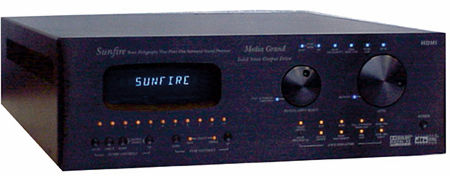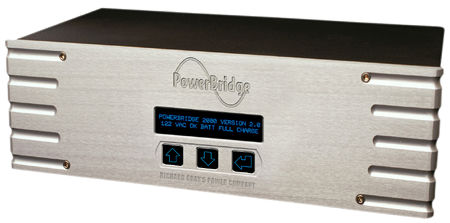Industry News
Sony Pictures Goes Full Throttle On Blu-ray
On Friday Sony Pictures Home Entertainment made a curious announcement that it had authored its first full-length Blu-ray Disc in 1920x1080 high definition, and was shipping the disc to manufacturers of Blu-ray players for testing. Following Holt's Law that the technical quality of a piece of software is inversely proportionate to its artistic merit, this landmark Blu-ray title is none other than the box office disappointment Charlie's Angel's: Full Throttle.
There were a couple of reasons that the announcement raised more questions than it answered. One is that while the resolution is spec'd as being 1920x1080, no mention was made as to whether it was interlaced or progressive. Inquiring minds certainly want to know. But even more curious is that the press release did make crystal clear that the disc had been compressed and authored using MPEG-2 compression, not the newfangled MPEG-4 or Windows Media compression that has been spec'd for both HD DVD and Blu-ray. Sort of like Coca-Cola announcing a new formula, but then claiming victory holding up a new can with the old formula inside.
Adding to the impression that this announcement might be more show than go, Sony's Ben Feingold was quoted as stating that, "this achievement will help everyone understand that Blu-ray is real and poised to enter the marketplace." Sony's Don Eklund added, "this is an important step for our industry in order to begin mass production of high-definition movies in the Blu-ray format in the near future."
Sunfire's Media Grand Preamplifier and Home Theater Processor
The model name might be a mouthful, but Sunfire's new Media Grand Preamplifier and Home Theater Processor is the kind of product that will certainly have home theater enthusiasts salivating. It's loaded with many of the latest and greatest features, and like the Media Grand moniker implies, surround processors aren't just about home theater anymore.

Like a growing number of processors the Media Grand includes high-bandwidth HDMI switching, and video "upconversion" of composite and s-video signals to component for simplicity of switching. I find the former a particularly useful feature- I'm constantly annoyed and frustrated by the number of displays (even expensive ones) that don't include more than one HDMI/DVI input.
The Media Grand is Internet Protocol (IP) compatible, allowing remote operation from any IP compatible handheld device, and its "operating system" can be updated through direct downloads from the Internet.
The latest surround modes from Dolby and DTS are included, but the press materials did not make any mention of the next generation DTS and Dolby HD formats that Blu-ray and HD DVD will carry. In addition to the usual surround suspects, Sunfire's Side-Axis 9.3-channel playback is included, as is a digitally implemented version of Bob Carver's Sonic Holography Imaging for enhancing the playback of stereo recordings.
Readers of Michael Fremer's Analog Corner in our sister publication Stereophile will be pleased to know that the Media Grand includes a built-in phono stage as well as an AM/FM tuner and an eight-channel analog input. Eight-channel balanced outputs are also provided. The Media Grand will be available in the first quarter of 2006 for $3995. www.sunfire.com
Richard Gray's Power Company's PowerBridge
A longtime staple of the computer industry, the Uninterruptible Power Supply (UPS) is doing what a lot of other computer components are doing lately- migrating into our home entertainment systems. Richard Gray's Power Company's PowerBridge is designed to not only switch over to battery power during a full or partial power outage, it also aims to provide the qualitative sonic and visual benefits of the company's renowned power line conditioner components.

While most of us probably don't need a UPS so we can see how Titanic turns out in the end, even after the power's gone dark, for those who have substantial investments in their systems the option of being able to safely shut down our components during adverse power conditions provides an obvious benefit, not to mention peace of mind. RGPC claims ludicrous-speed response times for the PowerBridge, which samples hundreds of points of each cycle in the AC wave form in order to detect power fluctuations. The PowerBridge is said to be able to "learn" and store these data points, using them as a reference to determine when conditions dictate a switch to battery power.
When idle- i.e., not on battery power- the six-outlet PowerBridge functions the same as an RGPC 600S. RGPC devices distinguish themselves from most power line conditioning products on the market by operating in parallel with the incoming AC, as opposed to being in series with it. As a result, the RGPC devices don't current-limit as many PLC's do, and in my own experience have shown themselves to be devoid of the sonic signatures that define (and often plague) other designs.
Several threshold adjustments can be made, and alarm and status indicators are accessible from the front panel, and the batteries are also "hot-swappable." The PowerBridge will be available by the end of the year at $2500. www.richardgrayspowercompany.com



















































